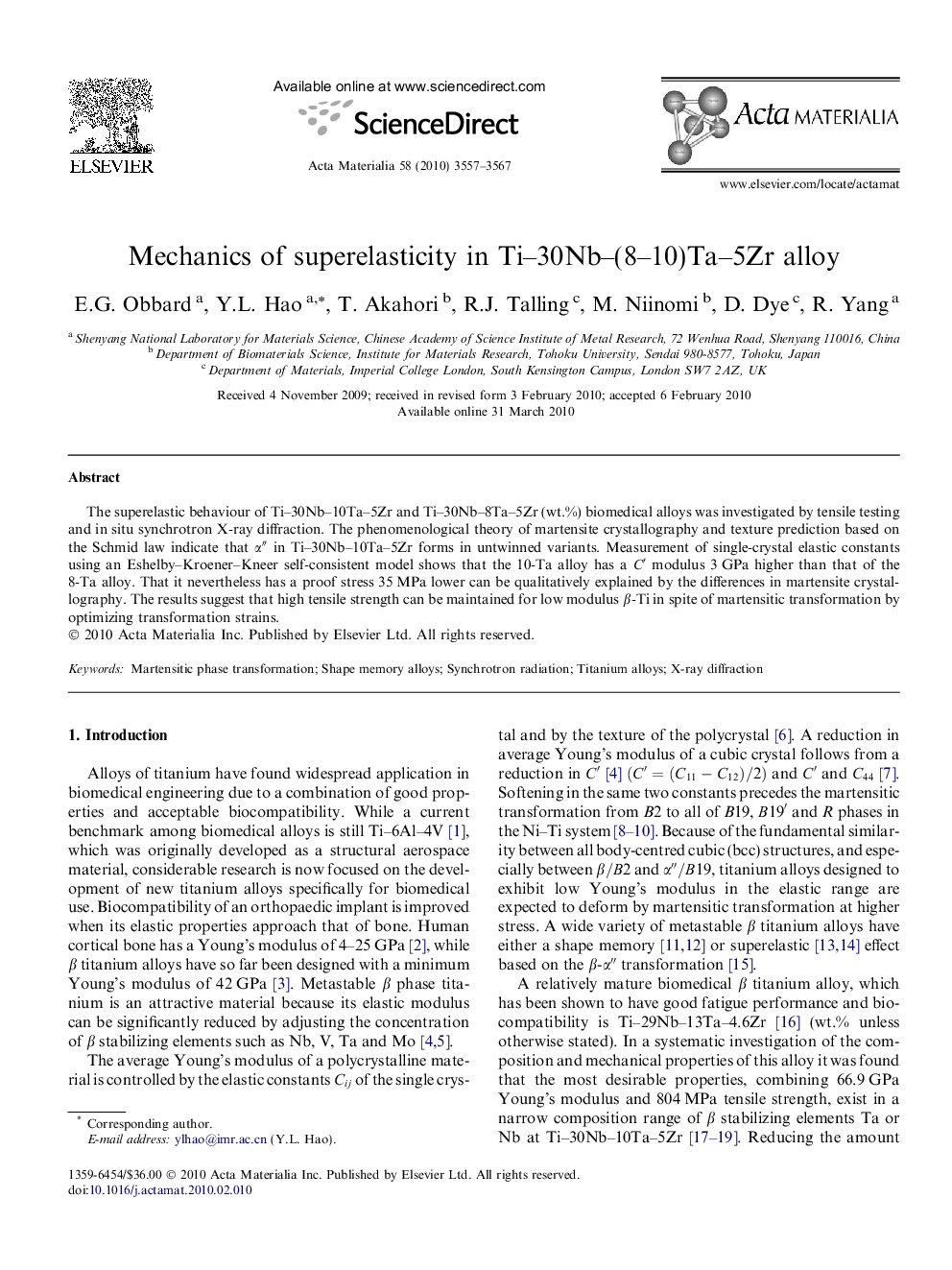| Article ID | Journal | Published Year | Pages | File Type |
|---|---|---|---|---|
| 1448739 | Acta Materialia | 2010 | 11 Pages |
The superelastic behaviour of Ti–30Nb–10Ta–5Zr and Ti–30Nb–8Ta–5Zr (wt.%) biomedical alloys was investigated by tensile testing and in situ synchrotron X-ray diffraction. The phenomenological theory of martensite crystallography and texture prediction based on the Schmid law indicate that α″α″ in Ti–30Nb–10Ta–5Zr forms in untwinned variants. Measurement of single-crystal elastic constants using an Eshelby–Kroener–Kneer self-consistent model shows that the 10-Ta alloy has a C′C′ modulus 3 GPa higher than that of the 8-Ta alloy. That it nevertheless has a proof stress 35 MPa lower can be qualitatively explained by the differences in martensite crystallography. The results suggest that high tensile strength can be maintained for low modulus β-Tiβ-Ti in spite of martensitic transformation by optimizing transformation strains.
